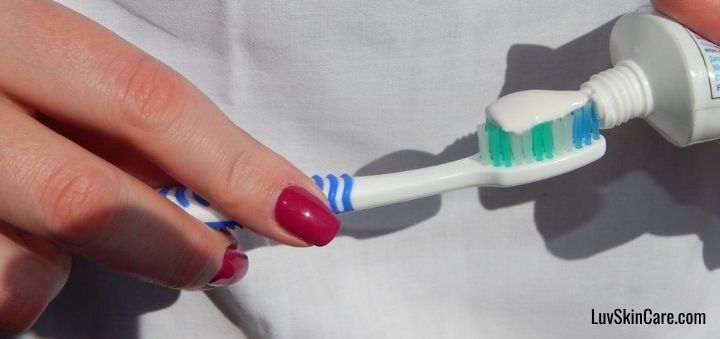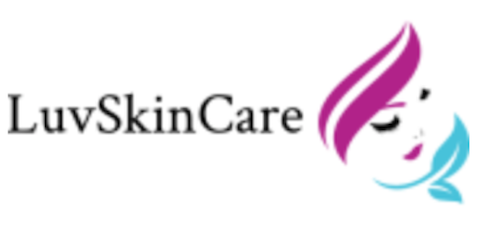When you have a stubborn acne breakout that just will not go away you can get pretty desperate. In the era of Pinterest hacks and YouTube beauty gurus, the abundance of do it yourself zit zappers can be a bit overwhelming. It seems like pretty much any household object or kitchen spice can play a role in clearing out your pores these days.
While some, like using bleach to dry out pimples, are dangerous and should not be tried under any circumstances, others are quite safe and effective. In a sort of middle ground between the two poles of the skin safety spectrum sits the antiquated toothpaste pimple mask hack.
Contents
Table of Contents

Should I Use Toothpaste for Acne?
People have been using toothpaste to help shrink pimples for decades. It sort of makes sense at a glance: it likely contains alcohol or benzoyl peroxide and is easily accessible. Think about it, you likely have a tube on next to your sink right now.
Almost every home in America has at least one tube on deck at all times. Plus, it is far cheaper than most products specifically formulated to be spot treatments. This trifecta of potential effectiveness, availability, and cost effectiveness can make plopping some toothpaste on your zits quite tempting.
It seems like a pretty sweet hack on the surface but none of the other facts really matter aside from, “does it actually work?”.
In short, sort of. As mentioned before, some toothpastes do contain ingredients that can help to reduce the size, intensity, inflammation, and duration of your breakouts. Additives like baking soda, peroxide, alcohol, bacteria fighters like triclosan can all help to dry out stubborn bumps.
In fact, applying toothpaste to a bump will likely work. Your zit will likely shrink pretty quickly but not at a higher rate than a typical spot treatment. Active ingredients like salicylic acid and tea tree oil are much more effective and carry less side effects when compared to the potential risks of using toothpaste.
It is a no brainer that toothpaste is not meant for usage on skin. It can be incredibly irritating. Some people experience reactions ranging from mild irritation and sensitivity to full on chemical burns.
Toothpaste on Pimples Can Burns
Dermatologists recommend against using such a harsh treatment, as the damage to your face could very well be permanent, especially if you manage to bleach your skin by using toothpaste containing whitening ingredients. Effective or not, using toothpaste on a pimple is not safe in any way, shape, or form.
One of the ingredients that likely started the toothpaste pimple treatment wives tale is triclosan. Used to kill bacteria in the mouth, it logically should also kill bacteria elsewhere on the body. Zits are caused by bacterial inflammation, so it makes sense that you would use such a chemical on pimples.
Recently, though, many companies are pulling the ingredient from their products due to it having a negative impact on hormone regulation and production, especially in females. With that ingredient being ditched, the whole plan loses a bit of steam, especially since you can grab any of the other ingredients that are touted as acne fighting assents within toothpaste for next to nothing.
What Kind of Toothpaste for Pimples?
If you are absolutely set on using toothpaste as a spot treatment, there are some steps to take before you try it out. First, understand that not all toothpastes will give the desired results. Only white, paste products will have any pimple reducing abilities.
This excludes gels, creams, or multicolored products. You should also avoid any whitening products, as they can bleach the area around the pimple and leave it blotchy. Low fluoride content is necessary within the paste, as fluoride is a mild skin irritant.
Around ninety five percent of commercial toothpaste brands contain fluoride since it is necessary in keeping your teeth healthy, making this difficult aside from the more expensive, natural brands that often run for more than a low end spot treatment.
Toothpaste on Face Side Effects
Many blogs recommend leaving the toothpaste on overnight as a long term mask to really dry out the zit. This will work but, be warned, it increases your risk of a negative reaction.
Some people who experience facial chemical burns notice an increase in the sensitivity of their skin for the rest of their lives, making it difficult to wear makeup or using many types of skincare products. It is best to consider your skin and weigh out the risks before making the leap into the more risky side of the DIY skincare territory.
Conclusion
At the end of the day, your best bet when fighting acne is to reach out to a medical professional. Dermatologists and doctors can help you figure out what is triggering your acne, be it hormones, food, or some other factor.
Once you figure out your triggers, you can begin actively preventing new breakouts and allow your skin to heal. Medications are also available at all price points, making it easy to choose a safe, regulated cream to help reduce the appearance of your breakouts.
Eyes Lips and Face Cosmetics, also known as ELF, for example, carries a rollerball vial spot treatment that consists of salicylic acid, witch hazel, camphor, tea tree, green tea, and aloe vera that retails for around two dollars.
You can get a highly rated spot treatment for less than the cost of a chicken nugget combo from McDonald’s! When there are so many different effective, safe treatments out there, it really does not make sense to use a remedy that could very well cause chemical burns.
